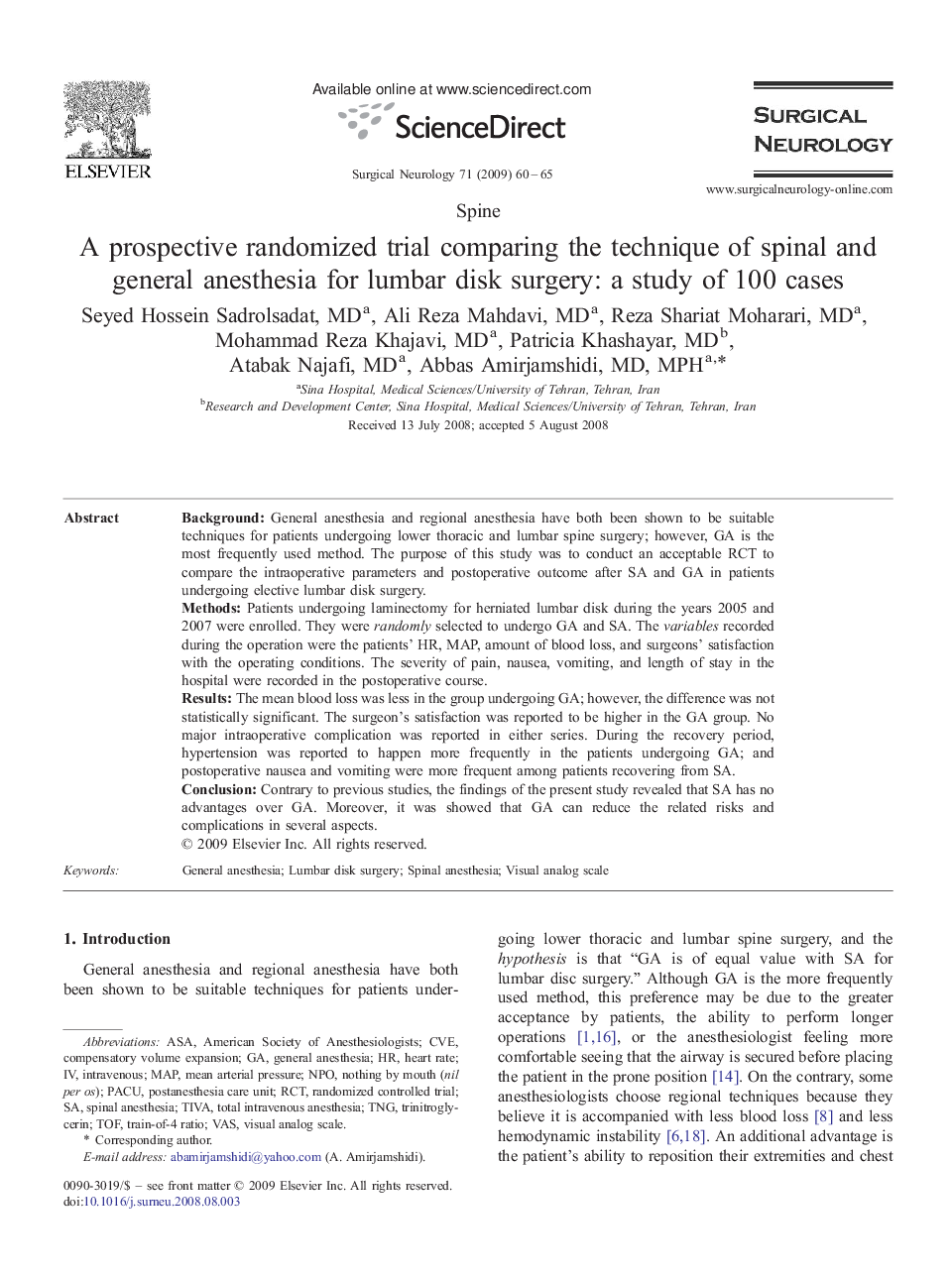| Article ID | Journal | Published Year | Pages | File Type |
|---|---|---|---|---|
| 3092414 | Surgical Neurology | 2009 | 6 Pages |
BackgroundGeneral anesthesia and regional anesthesia have both been shown to be suitable techniques for patients undergoing lower thoracic and lumbar spine surgery; however, GA is the most frequently used method. The purpose of this study was to conduct an acceptable RCT to compare the intraoperative parameters and postoperative outcome after SA and GA in patients undergoing elective lumbar disk surgery.MethodsPatients undergoing laminectomy for herniated lumbar disk during the years 2005 and 2007 were enrolled. They were randomly selected to undergo GA and SA. The variables recorded during the operation were the patients' HR, MAP, amount of blood loss, and surgeons' satisfaction with the operating conditions. The severity of pain, nausea, vomiting, and length of stay in the hospital were recorded in the postoperative course.ResultsThe mean blood loss was less in the group undergoing GA; however, the difference was not statistically significant. The surgeon's satisfaction was reported to be higher in the GA group. No major intraoperative complication was reported in either series. During the recovery period, hypertension was reported to happen more frequently in the patients undergoing GA; and postoperative nausea and vomiting were more frequent among patients recovering from SA.ConclusionContrary to previous studies, the findings of the present study revealed that SA has no advantages over GA. Moreover, it was showed that GA can reduce the related risks and complications in several aspects.
